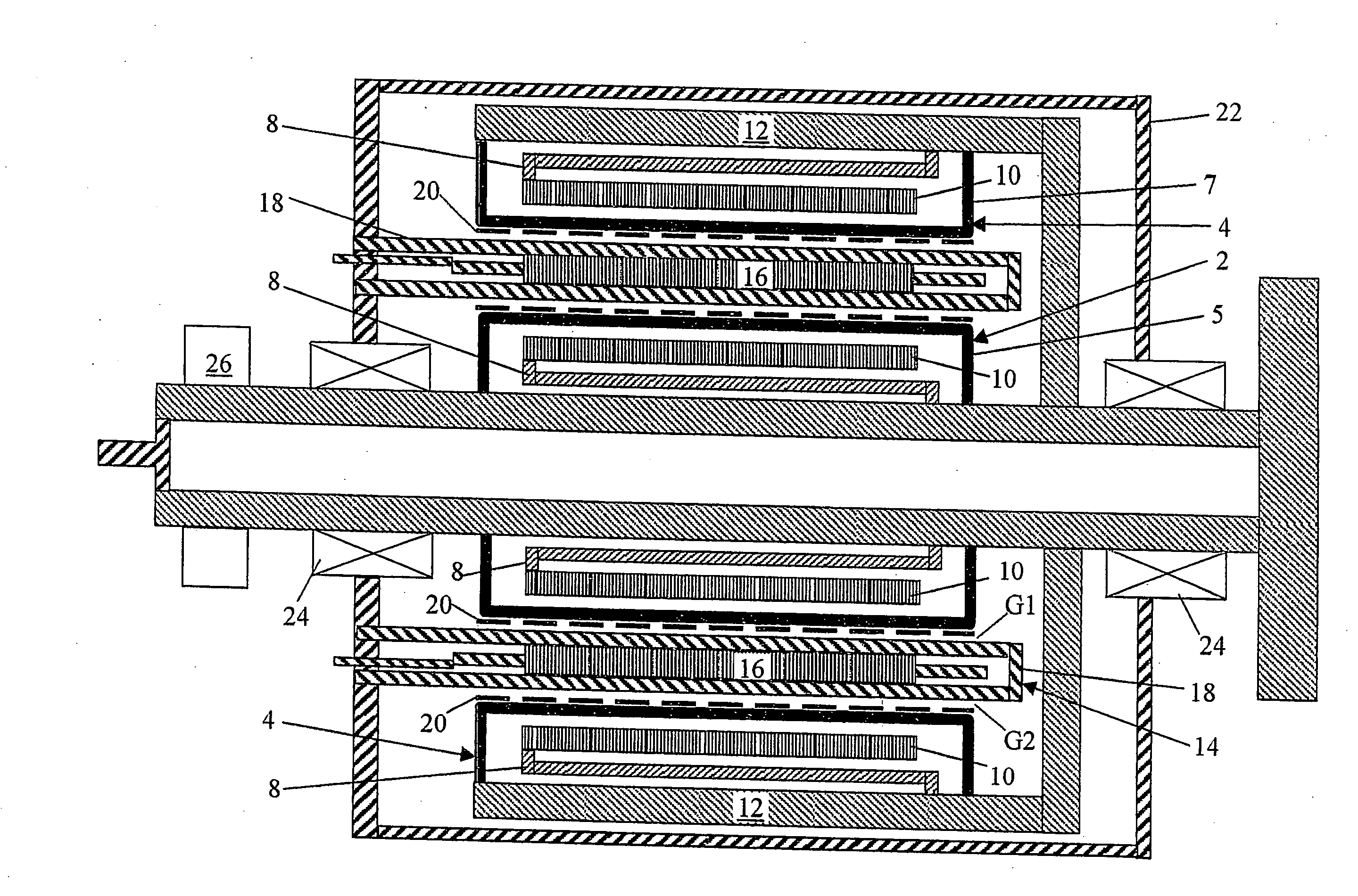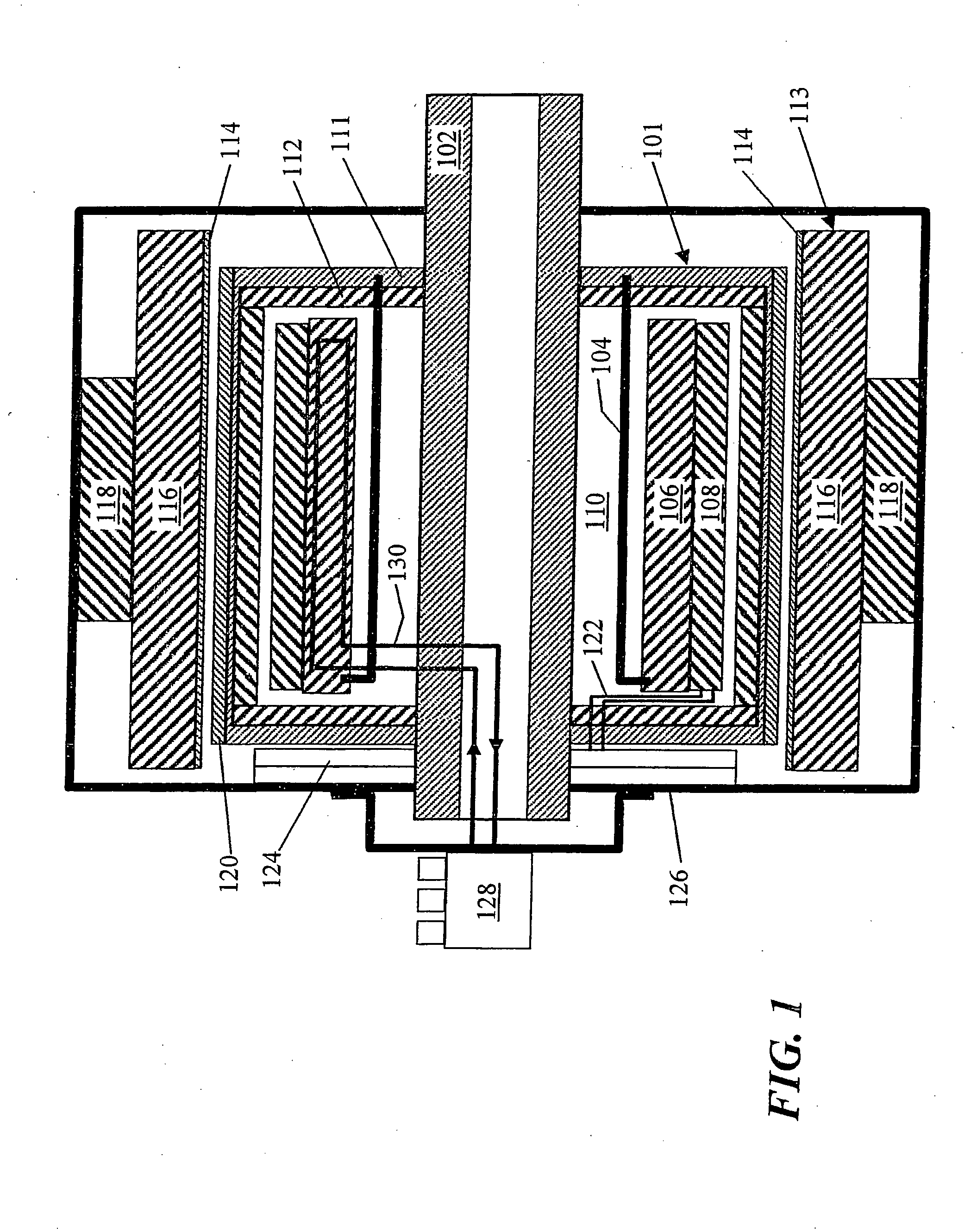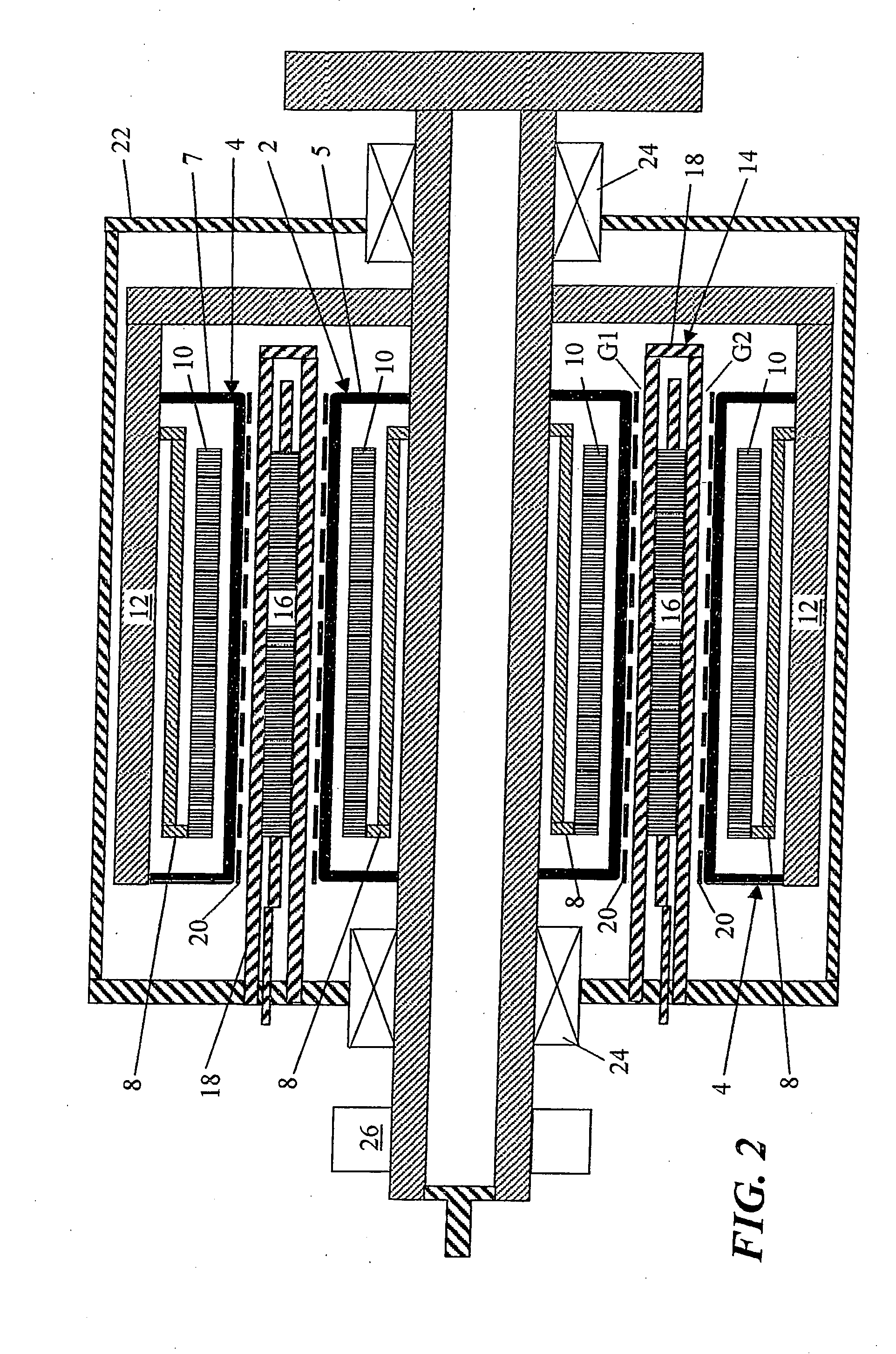Superconducting Electrical Machines
a superconducting electrical machine and superconducting technology, applied in the manufacture/treatment of superconductor devices, dynamo-electric machines, wind energy generation, etc., can solve the problems of significant source of acoustic noise, hysteresis and eddy current losses are particularly significant, so as to eliminate any stray magnetic flux and create no losses or noise.
- Summary
- Abstract
- Description
- Claims
- Application Information
AI Technical Summary
Benefits of technology
Problems solved by technology
Method used
Image
Examples
Embodiment Construction
[0041]The basic structure of a machine in accordance with the invention will now be described with reference to FIGS. 2 to 5. In FIGS. 3 to 5 the prototype HTS synchronous machine has broadly the same topology as the machine shown schematically in FIG. 2. Consequently, the same reference numerals are used in FIGS. 3 to 5 to indicate machine structure that is equivalent to that shown in FIG. 2.
[0042]Referring mainly to FIG. 2, the HTS synchronous machine includes a first (radially inner) annular rotor assembly 2 and a second (radially outer) annular rotor assembly 4. The inner and outer rotor assemblies 2, 4 are enclosed by the insulated walls 5, 7 of respective annular cryogenic vacuum chambers. The walls 5 of the inner cryogenic vacuum chamber are sealingly secured to the main shaft 6, whereas the walls 7 of the outer cryogenic vacuum chamber are sealingly secured to a rotor support structure 12.
[0043]In the inner rotor assembly 2, a carrier for a number of field windings 10 is joi...
PUM
| Property | Measurement | Unit |
|---|---|---|
| thickness | aaaaa | aaaaa |
| outer diameter | aaaaa | aaaaa |
| outer diameter | aaaaa | aaaaa |
Abstract
Description
Claims
Application Information
 Login to View More
Login to View More - R&D
- Intellectual Property
- Life Sciences
- Materials
- Tech Scout
- Unparalleled Data Quality
- Higher Quality Content
- 60% Fewer Hallucinations
Browse by: Latest US Patents, China's latest patents, Technical Efficacy Thesaurus, Application Domain, Technology Topic, Popular Technical Reports.
© 2025 PatSnap. All rights reserved.Legal|Privacy policy|Modern Slavery Act Transparency Statement|Sitemap|About US| Contact US: help@patsnap.com



